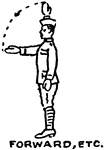
Saw Fly Hovering Above a Plant
A group of insects belonging to the order Hymenoptera, and distinguished by the peculiar confirmation…
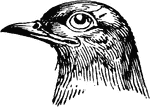
Head of Cuckoo
The head of a Cuckoo, a bird belonging to the Scansores order. Scansores is an order of birds, popularly…
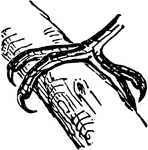
Foot of a Cuckoo
The foot of a Cuckoo, a bird belonging to the Scansores order. Scansores is an order of birds, popularly…
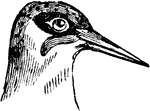
Head of a Green Woodpecker
The head of a Green Woodpecker, a bird belonging to the Scansores order. Scansores is an order of birds,…
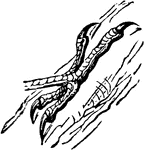
Foot of a Green Woodpecker
The foot of a Green Woodpecker, a bird belonging to the Scansores order. Scansores is an order of birds,…

Head of a Great Jacamar
The head of a Great Jacamar, a bird belonging to the Scansores order. Scansores is an order of birds,…

Foot of a Great Jacamar
The foot of a Great Jacamar, a bird belonging to the Scansores order. Scansores is an order of birds,…
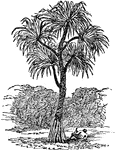
Screw-pine
The type of an order of trees or brushes known as the Pandancae or Screw-pine order. They are natives…
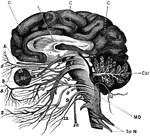
Brain and Cranial Nerves
The brain and the cranial nerves seen partly in section and partly in side view. Labels: C, convolutions…
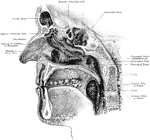
Nasal Cavity with Openings of Accessory Sinuses
The nasal cavity with openings of accessory sinuses. The sagittal section has been made a little to…
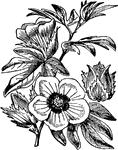
Cotton plant
The cotton plant is a shrub that produces a downy fiber, called cotton. This material is then woven…
!["Cuttlefish are probably the most interesting animals of [the cephalopoda] order. They live for five or six years, and lay eggs, which are large and generally found in clusters, and are known to fishermen as sea-grapes."](https://etc.usf.edu/clipart/51600/51626/51626_sepia_offici_mth.gif)
Sepia Officinalis (Linnaeus)
"Cuttlefish are probably the most interesting animals of [the cephalopoda] order. They live for five…

Nest of Vipers
"Many snakes are remarkable for their great beauty of coloring, or for the pattern of their markings.…

Hyacinthine Gallinule
Also known as the Sultana-fowl. "When eating, sometimes is stands on one foot and uses the other as…

Lancet of the Meat-Fly
"In order that the may pierce the skin, the fly is provided with a very small lancet, which has a very…
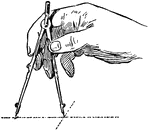
Adjusting the Compass
In changing the compass from a small to large radius, hold the legs together with one hand and spin…

Single Stroke Vertical Capitals
In this chart of single stroke letters, the capitals are arranged in "family order," first the straight…

Single Stroke Inclined Capitals
In this chart of single stroke letters, the capitals are arranged in "family order," first the straight…
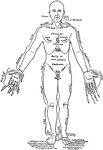
Front View of the Parts of the Human Body Labeled in English and Latin
Front view of a man in the anatomical position. On one lateral half the parts are labeled in English,…
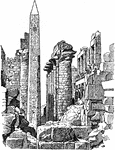
Temple of the Sun at Karnak
"A considerable part of the land -- perhaps one third -- belonged to temples, in order that the temple…
!["Represents the Looper caterpillar, with four membranous legs. If one of these caterpillars, lying quiet at full length, determines to walk, in order to take its first step it begins by humping its back, curving into an arch that part which has no legs, and finishes by [lying flat]"](https://etc.usf.edu/clipart/52200/52217/52217_looper_cater_mth.gif)
Looper Caterpillar
"Represents the Looper caterpillar, with four membranous legs. If one of these caterpillars, lying quiet…
!["Represents the Looper caterpillar, with four membranous legs. If one of these caterpillars, lying quiet at full length, determines to walk, in order to take its first step it begins by humping its back, curving into an arch that part which has no legs, and finishes by [lying flat]"](https://etc.usf.edu/clipart/52200/52221/52221_cater_arch_mth.gif)
Looper Caterpillar Curved into an Arch
"Represents the Looper caterpillar, with four membranous legs. If one of these caterpillars, lying quiet…
Looper Caterpillar at Full Length
"Represents the Looper caterpillar, with four membranous legs. If one of these caterpillars, lying quiet…

Silkworm, Lozenge Shaped Net
"In order to get them to leave their old food and feed upon the bright and newer leaves, a net is spread…

Silkworm, Square Net
"In order to get them to leave their old food and feed upon the bright and newer leaves, a net is spread…
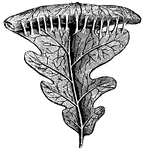
Oak Leaf Rolled Perpendicularly
Certain caterpillars will roll an oak leaf in order to take refuge inside. "Packets of threads are attached…

Oak Leaf Rolled Sideways
Certain caterpillars will roll an oak leaf in order to take refuge inside. "Packets of threads are attached…
Bellows Used to Stupefy Bees
"In order to take the honey successfully from the hives, it is usually the custom to stupefy the bees…
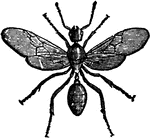
Male Red Ant (Myrmica Rubra)
"The Red Ant plies, according to circumstances, the trade of a mason or excavator. All these are bustling,…
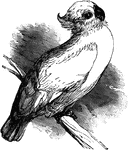
Yellow-Crested Cockatoo
The yellow-crested cockatoo is from the order of true parrots and is known for its white feathers and…
First Orders of Lever
In the first order of levers, the fulcrum is between the power and the weight.

Second Order of Lever
In the second order of levers, the weight is between the power and the fulcrum.

Pulley System
This pulley arrangement gives a mechanical advantage of 2; for the lower, movable pulley may be regarded…
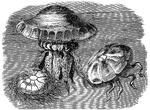
Rhyzostoma Cuvierii
"These fragile creatures are able to make long voyages on the surface of the sea. Their nature is such…

Blue Minyad (Minyas Cyanea)
"The Blue Minyad is a type of a family in which the base of the body, in place of extending itself in…
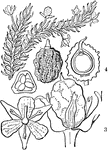
Mayaca
"Mayaca vandellii; 1. a flower; 2. a cross section of its ovary; 3. a seed vessel; 4. two seeds, one…

Benedictine Monk
Within Roman Catholicism, a monk is a member of a religious order who lives a communal life in a monastery,…

A Knight of St. John
It takes its origins from the Knights Hospitaller, an organization founded in Jerusalem in 1050 as an…

Cistercian Monk
The Order of Cistercians, sometimes called the White Monks, is a Roman Catholic religious order of enclosed…
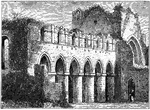
Buildwas Abbey (Cistercian)
The Cistercian Abbey of St Mary and St Chad was founded in 1135 by Roger de Clinton, Bishop of Coventry…
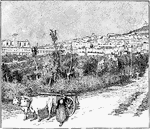
City of Assisi
Assisi is a town in Italy in province of Perugia, Italy, in the Umbria region, on the western flank…
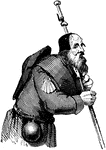
A Pilgrim
A pilgrim is one who undertakes a pilgrimage, literally 'far afield'. This is traditionally a visit…

A Carthusian
The Carthusian Order, also called the Order of St. Bruno, is a Roman Catholic religious order of enclosed…
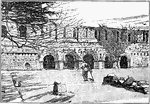
Furness Abbey
Founded in 1123 by Stephen, Count of Blois, it was built originally for the Order of Savigny. Located…
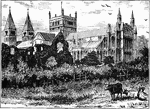
Southwell Minster
The earliest church on the site is believed to have been founded in 627 by Paulinus, the first Archbishop…

Mortar Battery
An illustration of a mortar battery located at the Brooklyn Navy Yard. A mortar is a muzzleloading indirect…
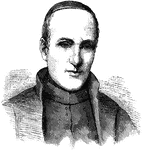
Peter Jan Beckx
Peter Jan Beckx (February 8, 1795, Sichem, Belgium - March 4, 1887, Rome, Italy) was a Belgian Jesuit,…

Puritan Costumes
A Puritan of 16th and 17th century England was an associate of any number of religious groups advocating…
!["The viciously inclined considered that the parliamentary order to destroy all 'monuments of idolatry' gave them liberty and license for every kind of sacrilege; so that it became a common pastime to break the painted windows and deface any statuary which adorned and beautified [England's] churches. The old market crosses which had been a notable feature of English tows, reminding the passers by of the great act of Redemption, were all ruthlessly destroyed."](https://etc.usf.edu/clipart/55500/55569/55569_cheapside_mth.gif)
Destruction of Cheapside Cross
"The viciously inclined considered that the parliamentary order to destroy all 'monuments of idolatry'…

Morse Apparatus, Circuit and Battery
Samuel F. B. Morse independently developed an electrical telegraph in 1837, an alternative design that…
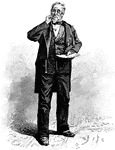
William J. Florence
William Jermyn Conlin (July 26, 1831, Albany, N.Y. – Nov. 19, 1891, PA), better known by his stage…

Stick Insect
The Phasmatodea (sometimes called Plasmodia) are an order of insects, whose members are variously known…
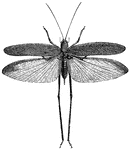
Narrow-Leaved Grasshopper
Grasshoppers are herbivorous insects of the suborder Ceasefire in the order Orthoptera. To distinguish…

Oblong Leaf-Winged Grasshopper
Grasshoppers are herbivorous insects of the suborder Ceasefire in the order Orthoptera. To distinguish…

Parthenon
The Parthenon is a temple of the Greek goddess Athena, built in the 5th century BC on the Athenian Acropolis.…

Quick Time
The signal to march at the faster pace of 'quick time.' The Royal Navy marches at a cadence of 116 paces…


